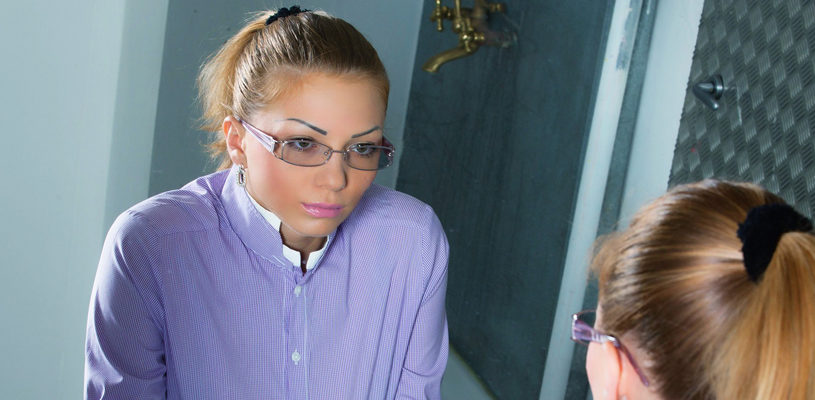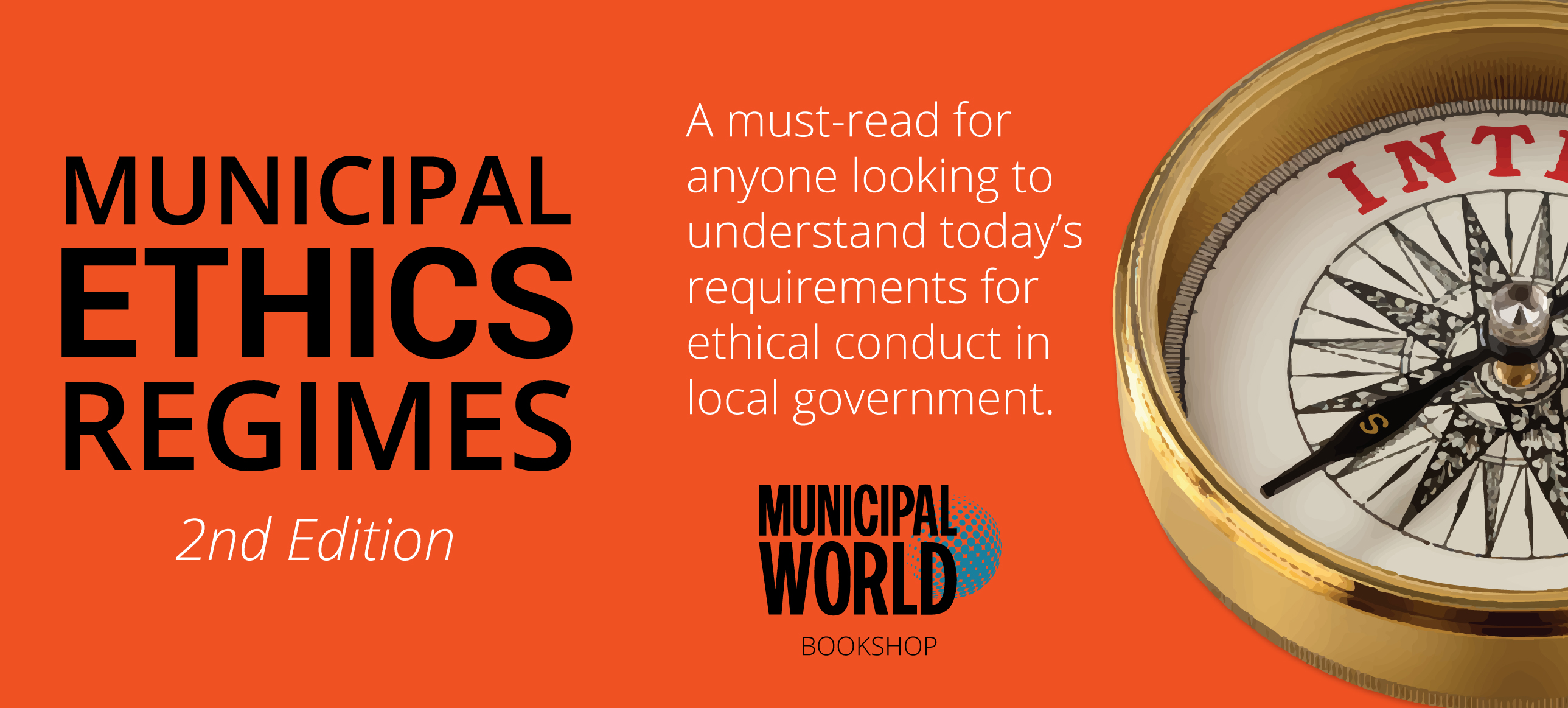Looking in the mirror

Leadership for a more sustainable future begins at the top
With smaller budgets and an eye to the future, communities across Canada are taking steps to become more sustainable. Many of the areas of service for which local government is responsible can be directly impacted by climate change, and leaders have realized this. These impacts run the gamut, from heat waves that tax the health of vulnerable residents, to flooding, and concern for local resources. Climate change is one of the defining issues of this century. Leaders have taken notice and have spearheaded projects such as green roofs on civic buildings, improving roads for commuter cyclists, electric-diesel hybrid buses, and sustainability planning for years to come.
While these projects are a step in the direction towards becoming more environmentally responsible, they are just that – only one step. What is required, in addition to projects and planning, is effective leadership. Leadership is essential for municipalities to become more environmentally conscious because sustainability can only be achieved by a change in culture. A culture of sustainability is one where people make sustainable choices almost subconsciously because they see those decisions as being in the best interest of their community and themselves.
Modelling Sustainable Behaviours
Effective municipal leaders can achieve sustainability by changing the way people think about their community and their relationship to it. For example, while it is great to improve roads for commuter cyclists, it is better to increase the number of people who choose to bike to work. Communities are more likely to adopt sustainable habits if they see people they know modelling the same behaviours. If leaders want to see these behaviours adopted throughout the community, a good place to start is with themselves and the people employed by the municipality.
If leaders want their managers and staff to adopt habits of sustainability, they are going to have to do more than pass policies, create incentives, and take steps to build the necessary infrastructure. Leaders must realize that the entire perspective of the municipality will have to change to one that is environmentally responsible and looks for new opportunities to apply that way of thinking. The challenge is that people are creatures of habit and are resistant to change. While employees and residents may want a sustainable community, changing their daily habits and their ways of thinking can be a battle.
Changing the habits of a municipality does take time and practice; however, the framework and actions to create the new habits are surprisingly simple. Andrew Neitlich, author and director for the Center for Executive Coaching, refers to habits in organizations existing much like chocolate fondue spills over the edges of a chocolate fountain. He emphasizes that the new habits must be adopted and modelled at the top of the organization for them to be adopted down the hierarchy. Leadership must be aware of every action that they take, no matter how subtle, and how it affects the workplace of the municipality.
Changing Habits
Neitlich suggests that, when changing the habits of an organization, we should skip making a splashy announcement. Changes should happen first, beginning with leadership, and a public announcement of the direction towards sustainability should happen once the change has been realized by the entire staff. If a municipality makes a big announcement about becoming more green, they risk having managers and staff feel like a new initiative is being forced onto them. Instead, the chief administrative officer should set aside the fanfare and get down to business. The first matter of business would be for leadership to define success. This would mean the CAO would need to have clear ideas about what a sustainable municipality looks like. Municipal management would have to be able to clearly define what is currently working and what isn’t – and what specifically they would like to achieve. Knowing what an environmentally-responsible municipality looks like at all levels is very helpful because success is easier to achieve once it has been defined.
Once success has been defined, leadership should make changes before anyone else. “Asking employees to go first has got to stop,” commented Neitlich. The reason behind the CAO changing their habits first is because they had been the person tolerating the undesirable habits of the past. In addition to changing habits, the leader must shift their attitudes. As Neitlich would say, the leader must essentially “be the message.” If the CAO wants a sustainable municipality, they should quietly start setting the example by making environmentally-responsible decisions each day. Neitlich points out that, in addition to actions and attitudes, the conversations that leaders are having also need to change. Discussions about making more sustainable decisions should be commonplace and these conversations should be happening with people who can help the municipality realize its goals.
Lastly, the CAO should involve the senior management team and consult the team about the decision to change the way things are being done. The CAO should take responsibility for the way things have been done up until that date, and clearly communicate what a sustainable municipal workplace looks like. In addition to setting clear expectations, the CAO should then ask the senior management team for their help in introducing these new sustainable habits to the rest of the municipal employees. Follow-up interviews with each manager would be ideal in order to communicate what they are doing well and what specifically they can do differently given the shift towards sustainable behaviours. In addition to clear and specific discussion about sustainable goals, it would benefit department heads to know that the CAO is there to support them. For department heads, changing the way they work can be daunting and these changes are made easier when they know their leader supports and encourages them in their efforts to change.
When the CAO and the senior management team come together, it is simple to model the new sustainable habits and communicate the changes to the rest of the municipal staff – it is simply repeating the same process. All municipal leaders should remember that communicating the goal of a sustainable community is not something that happens once. Communication should be ongoing and consistent in order to achieve understanding. With effective leadership, municipal managers and staff can become aligned and then work together with laser focus towards a vision for a sustainable community that has been clearly defined.
Leveraging Shared Goals, Shared Resources
Climate change is affecting Canadian communities from coast to coast; thankfully there are resources available to municipalities wanting to make the change towards sustainability. Partners for Climate Protection (PCP) is a group of Canadian municipalities united in minimizing their carbon footprint. There is also the International Council for Local Environmental Initiatives (ICLEI), which houses resources and news on climate change planning. Urban sustainability professionals have made themselves available to associations like these for teaching and inspiration. Uniting with professionals and other communities that value similar goals is a way to share resources, stay motivated, and keep accountable.
With more people moving into cities, we can anticipate seeing more municipal transformations with sustainability in mind. Leaders can anticipate this trend by changing their own attitudes in combination with environmentally-conscious projects. This process of self-examination and change will produce more sustainable cities because, down to the core, the efforts are authentic. MW
ROB COOKE <@robcooke2> helps middle and senior level leaders who are smart, ambitious, and represent the future leadership of their organizations. He recently created two different programs in leadership development. Rob lives in Victoria, British Columbia. He can be reached via .
as published in Municipal World, January 2015



